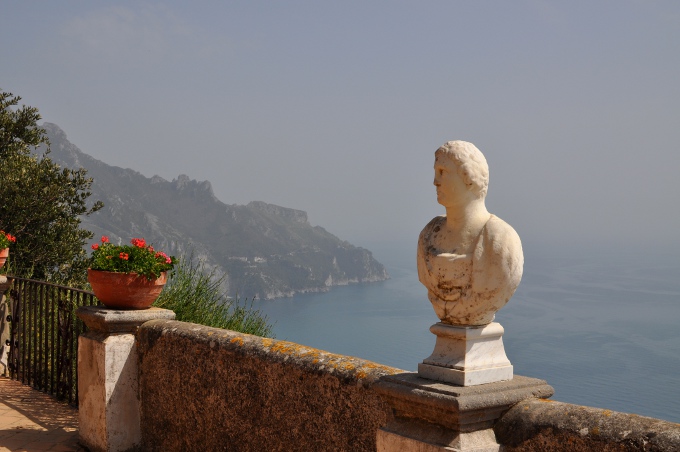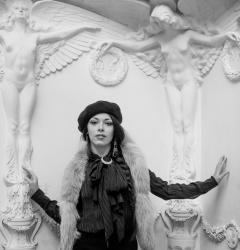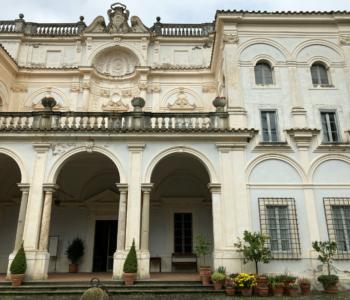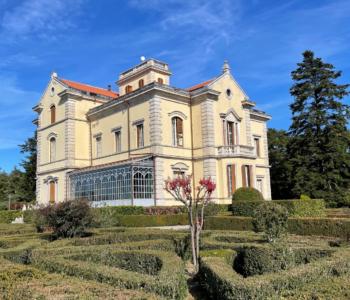
Ravello seems to be the place where romantic and intellectual english men found the peace long yearned and sought after the wanderings of the Grand Tour. Villa Cimbrone, along with the other Villa Rufolo, it’s one of these places. The Villa belonged to aristocratic families since 14th century and until the first half of the 19th century, when it was abandoned and left in decay.
At the end of the 19th century, the Englishman and rich banker Ernest William Beckett (1856-1917), 2nd Lord Grimthorpe, visited the Villa and fell hopelessly in love with the place and in 1904 he bought part of it. He was visiting Amalfi’s coast in order to recover himself from the deep depression that afflicted him following the loss of his beloved wife Lucy Lee, who passed away at the age of just 28 while giving birth to his only son. Infact this part of Italy had earned an excellent reputation among foreigners for being a place to rediscover one’s soul and to regain the tranquillity for which they yearned.
Lord Grimthorpe decided to revive the Villa and make it : “the most beautiful place in the world”. The garden was partially redesigned, although its form was to a large extent determined by certain pre-existing elements, in particular the central path today called “The Avenue of Immensity” . Characterized by the aesthetic concepts of English architects and landscapers such as Harold Peto, Edwin Lutyens and Gertrude Jekyll, it was expertly organized, with various “episodes” and trails branching off from the central path that leads from the monumental entrance to the panoramic viewpoint.
Among the rich and varied native and exotic plants, in a delightful union between English landscaping and the tradition of Italian gardens, a large number of splendid decorative elements were added: fountains, nymphaea, small temples, pavilions and stone and bronze statues. They were the result of the strong influence of classical literature and the reinterpretation of the “Roman villa”. Trees and plants for the flowerbeds were chosen by the English botanist Vita Sackville West.
Villa Cimbrone often hosted gatherings of the prestigious Bloomsbury Group and the long central path, in May 1880, provided the backdrop to the famous horse ride by Cosima and Richard Wagner: “the view from there, for me, is the most beautiful of all”.
source: villacimbrone.com
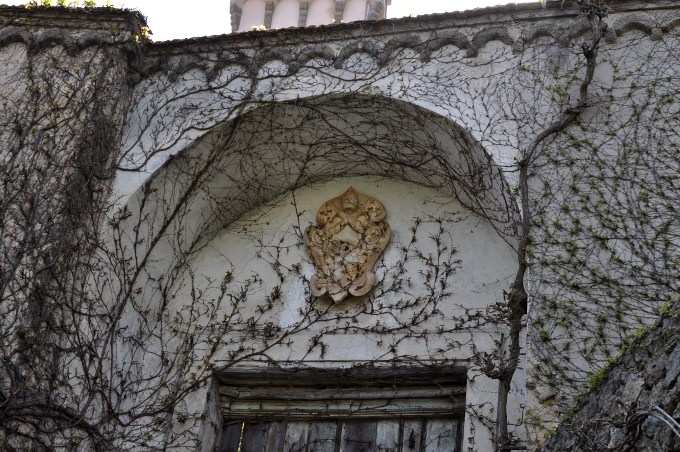
The sixteenth century doorway
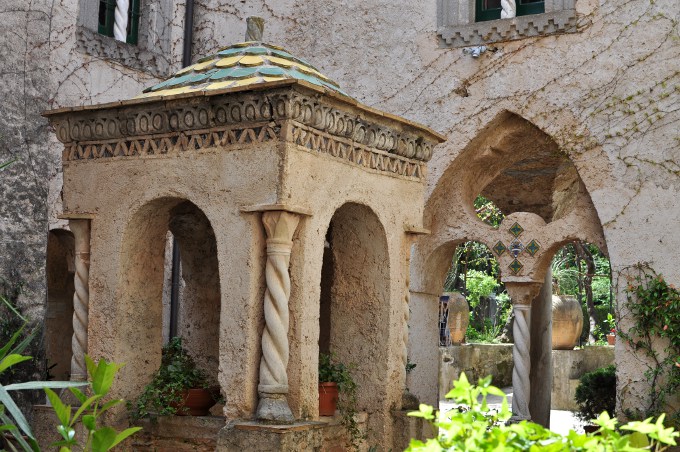
The cloister, a graceful little courtyard in an Arabian – Sicilian – Norman style.

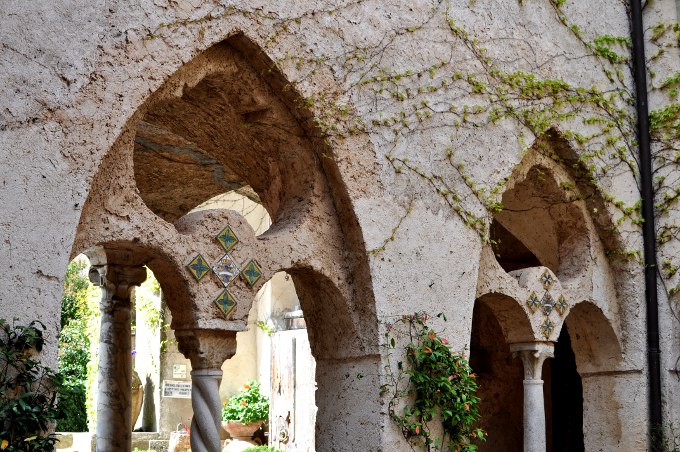

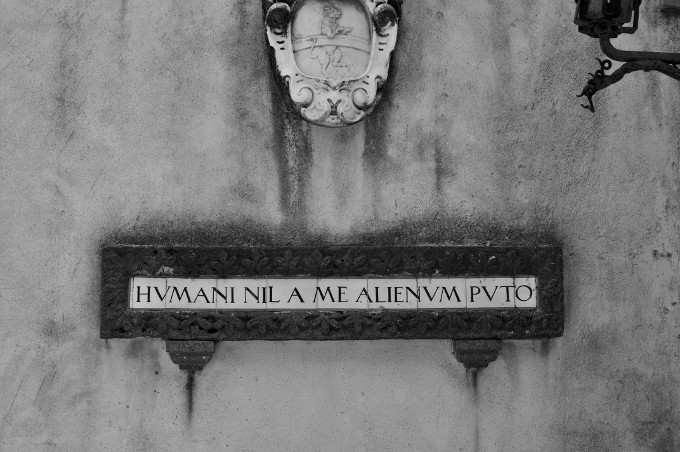
The Villa is decorated by quotations on the walls like this one, by Terenzio.
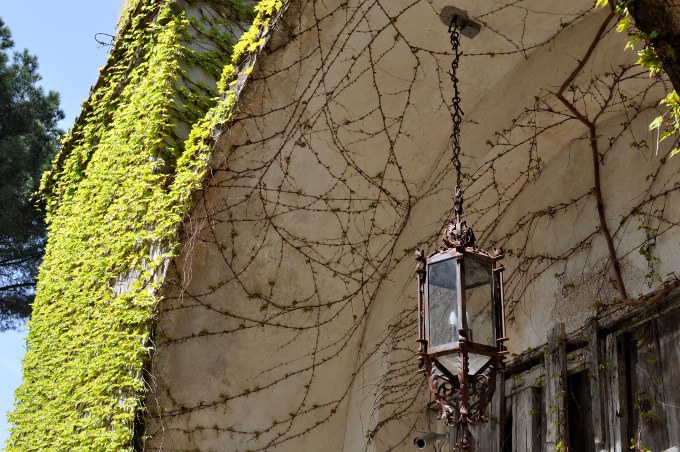

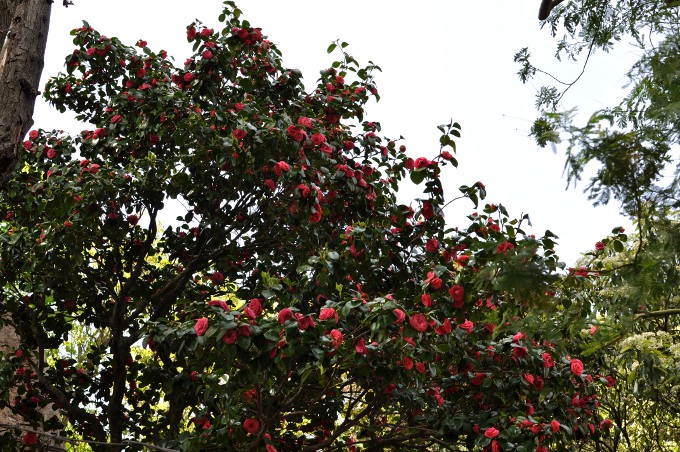
Camelia tree
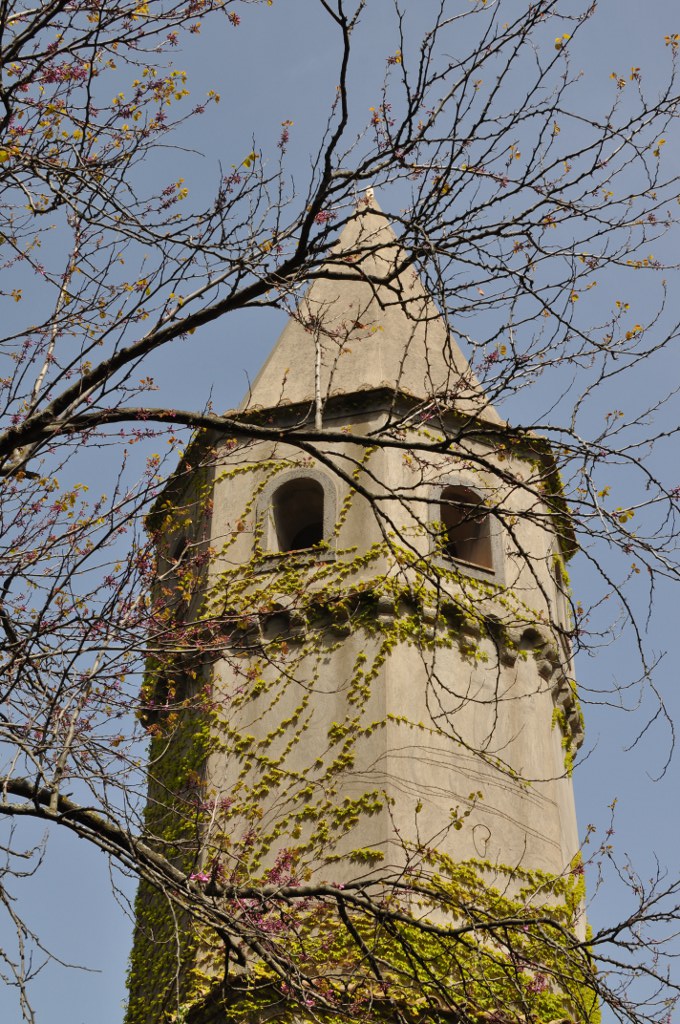

The Avenue of Immensity, thickly covered initially by climbing of unusual length, which was created in the early decades of the XVIIth century.
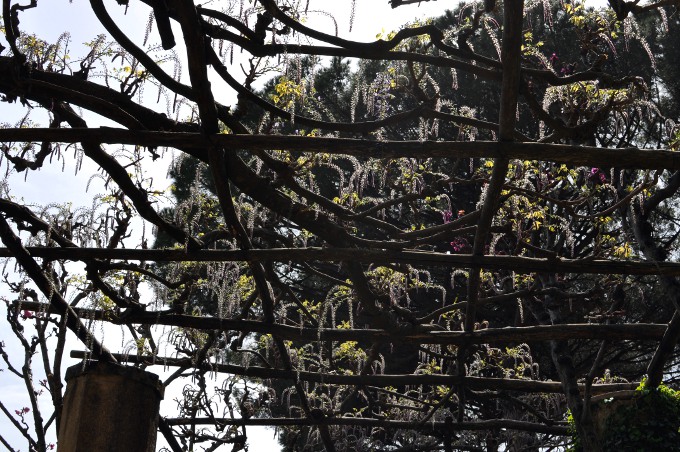
wisteria pergola
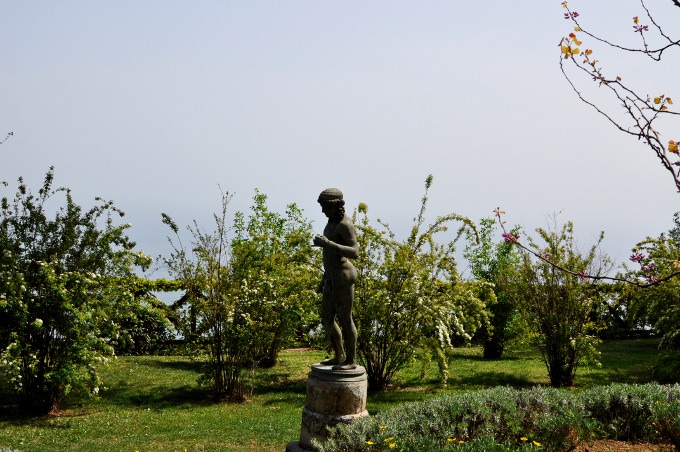
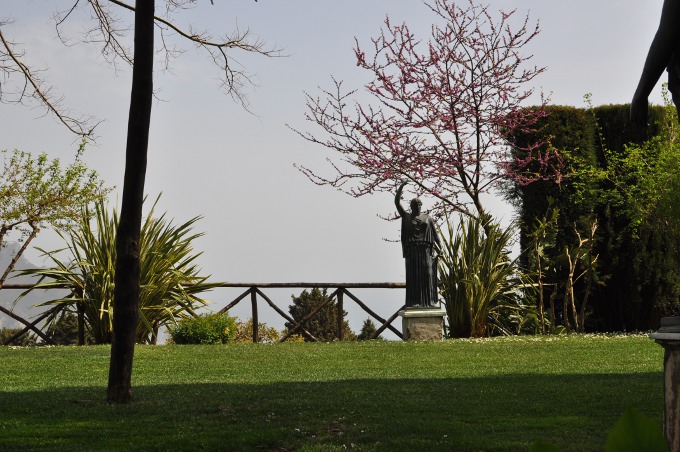
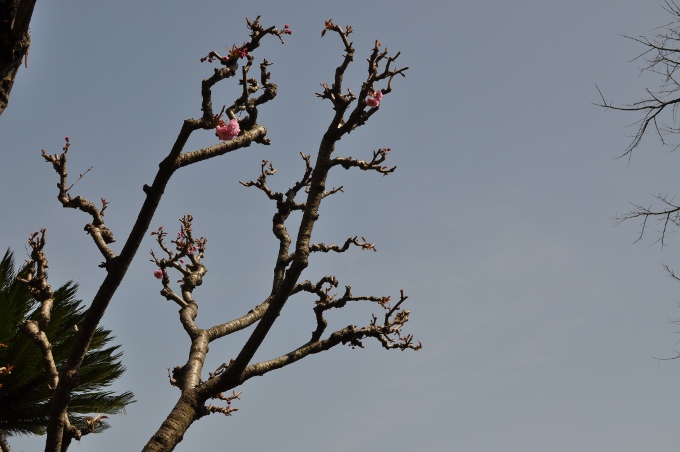
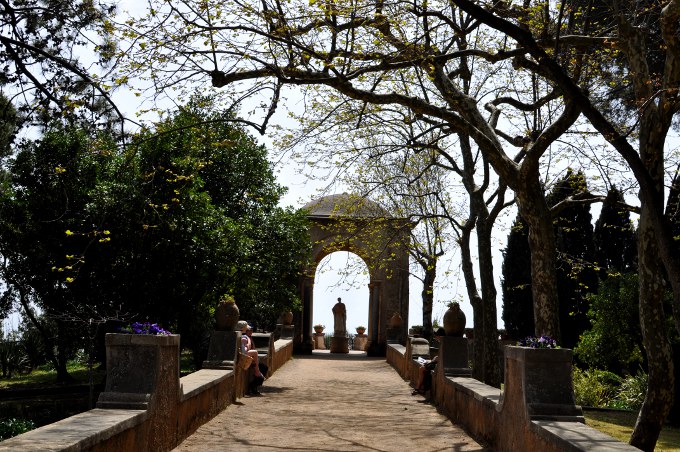
The Temple of Ceres, goddess of the Harvests, marks the end of the avenue and the entrance to the Terrace of Infinity.
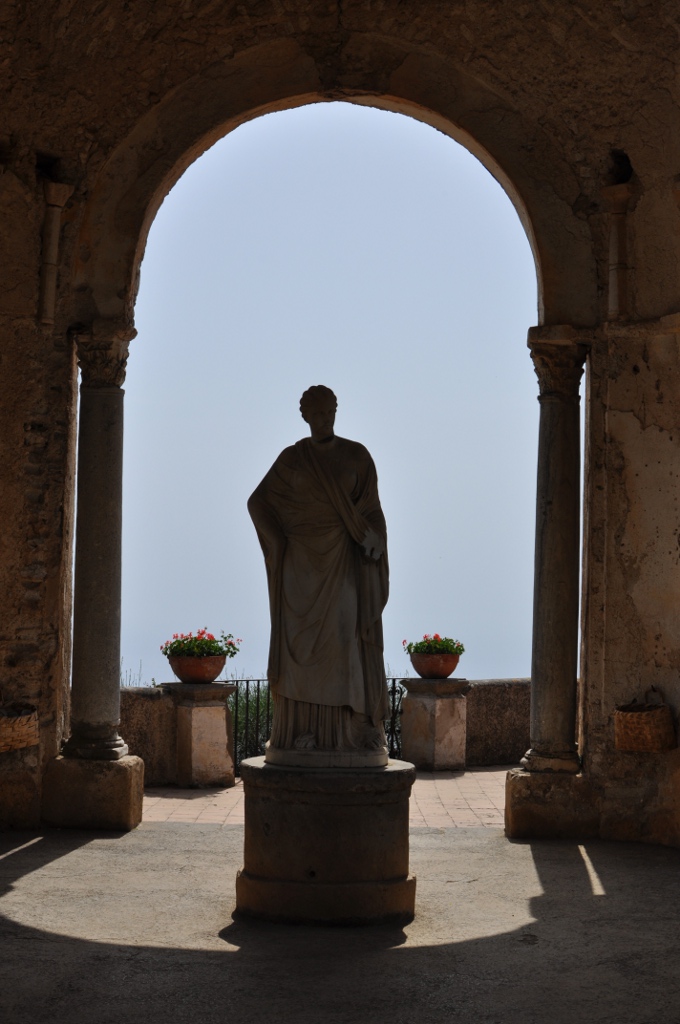

The Terrace of Infinity, an incomparable natural balcony adorned with eighteenth century marble busts.


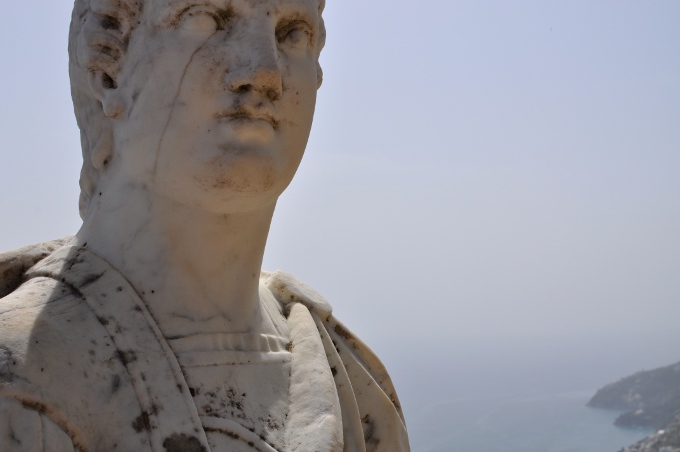

The Seat of Mercury, a XVIIIth century bronze copy of “Hermes at rest”, a statue from the school of Lisippo. To one side, as an invitation to pause, an inscription in English erroneously attributed to the writer and poet D.H.Lawrence who found such inspiration here for his works, while we know today that the quotation is from Catullus: “Lost to the world of which I desire no part, I sit alone and speak to my heart, satisfied with my little corner of the world, content to feel no more sadness for death.”

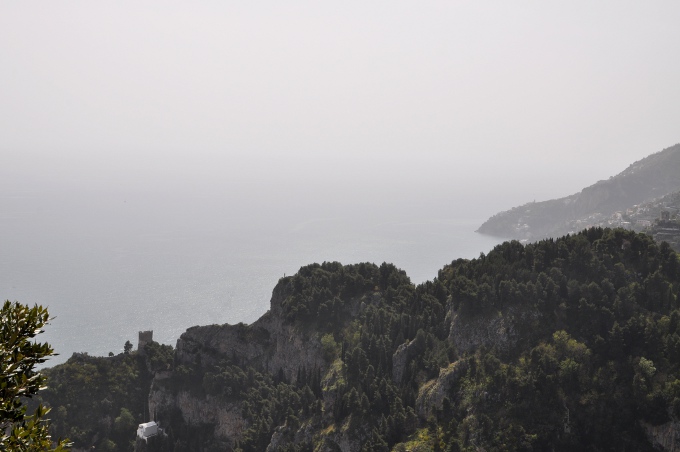
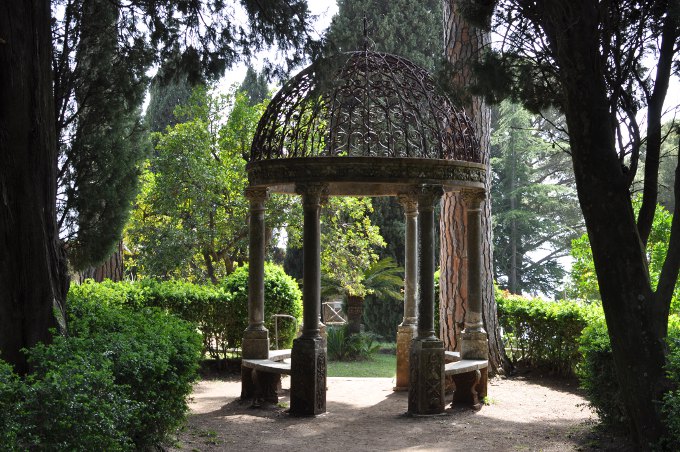
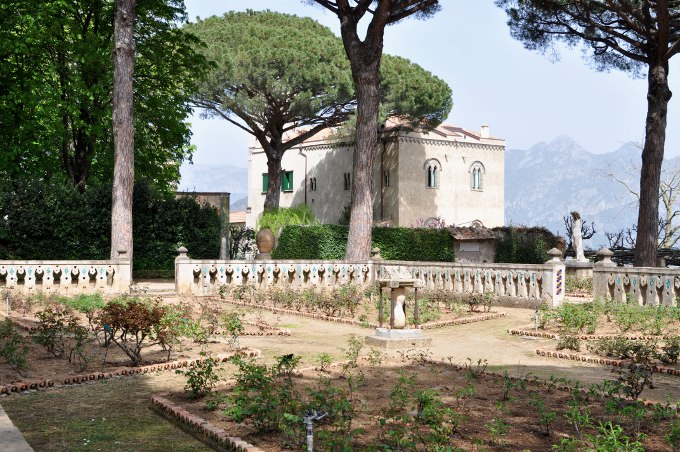
The Rose Terrace. Here, within an arabesque balustrade, mindful of an old and absolutely English badminton court, in geometric flowerbeds, from May to October, ancient varieties of beautiful, scented French and English roses flower.

In the middle stands a light stone meridian; on the outer edges, four ornamental statues: Flora, goddess of Flowers and Spring, Leda with Swan, and two wrestlers, Damosseno and Greucante.
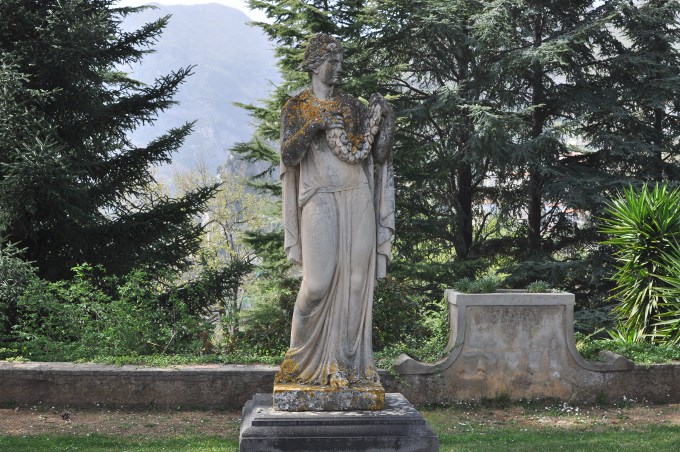
Flora, goddess of Flowers and Spring
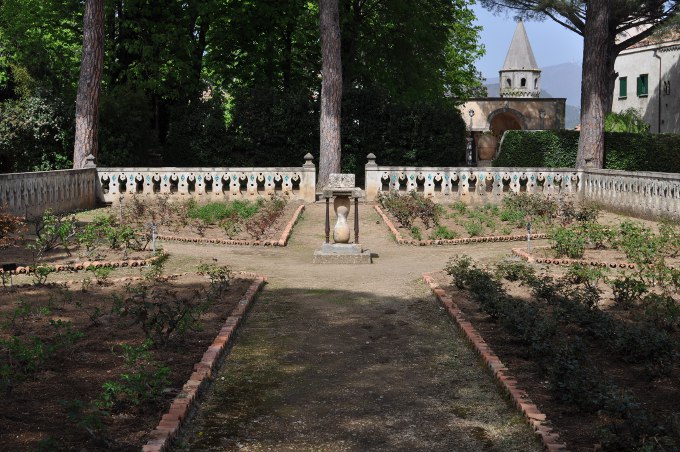
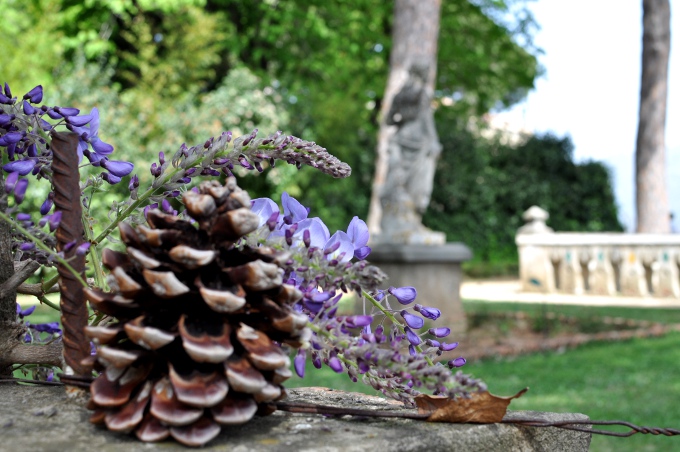
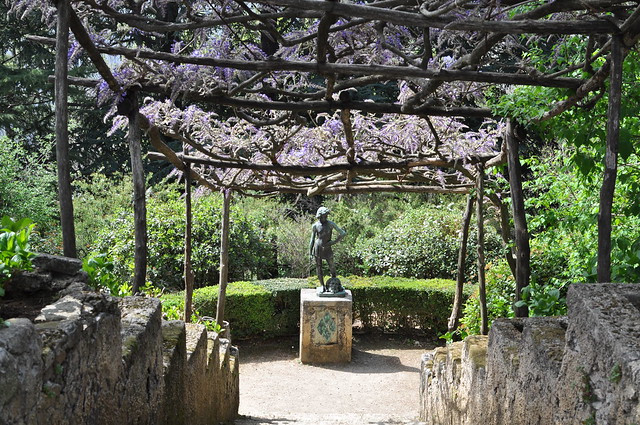
David, a bronze statue produced by the Neapolitan sculptor Gioacchino Varlese, in imitation of the one by Verrocchio kept at the national museum in Florence.
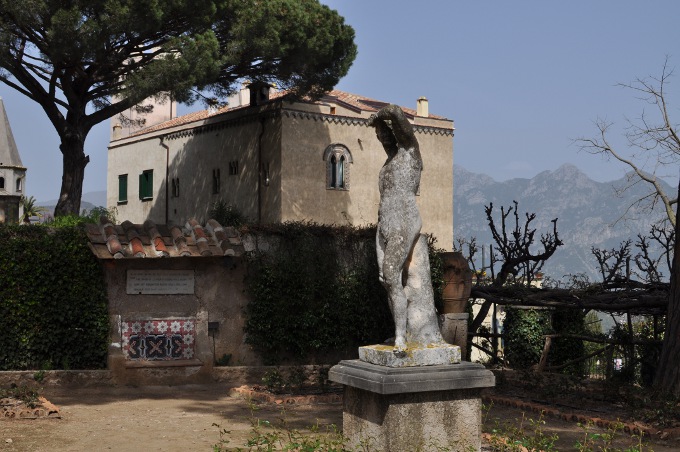
Near the statue of Greucante, a poetic inscription by the Persian Omar Khayyam: “Oh moon of my delight which knows no decline, the moon in the sky is rising once more, thus, as it rises again in future, peeping through this very garden, it shall seek us in vain.”
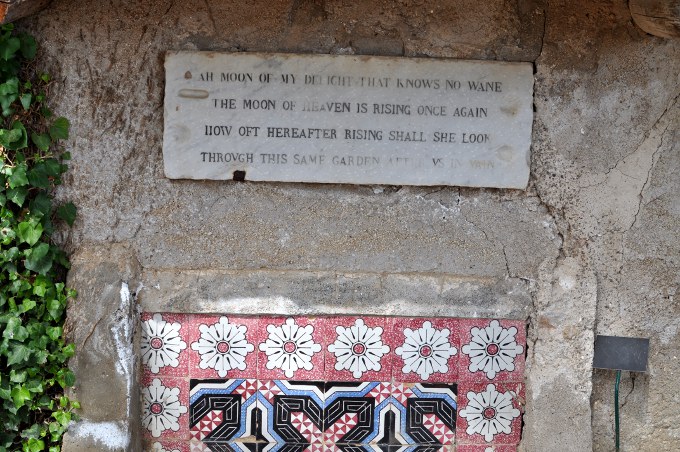
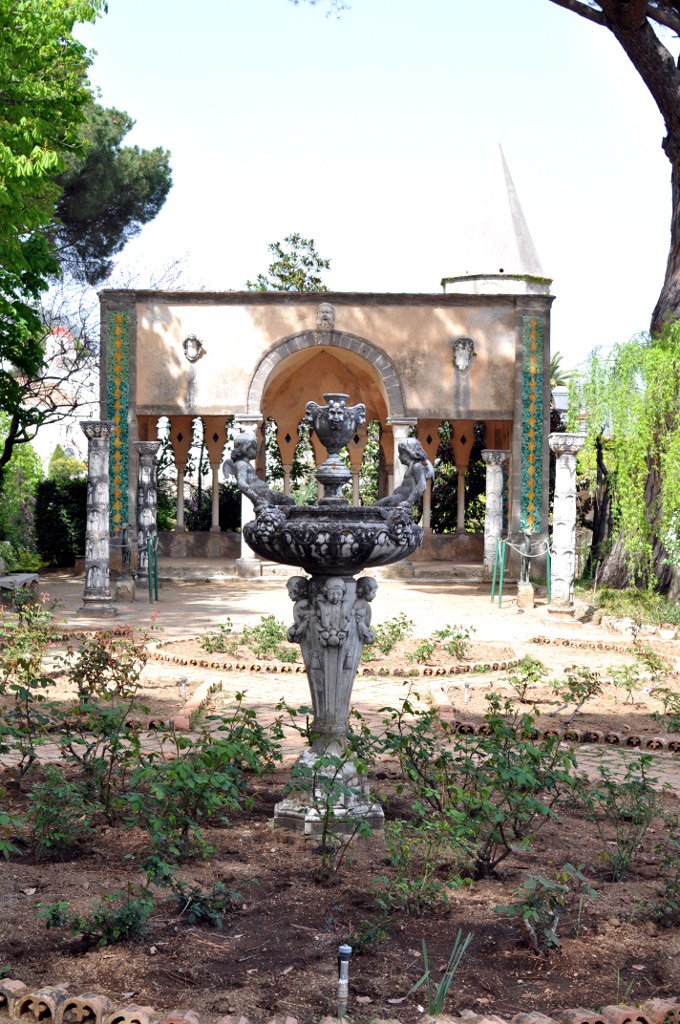
The end of the visit will lead you to an open pavilion, called Tea-room. The esoteric connotations, much in vogue at the beginning of the last century, are clear, particularly in the choice and layout of the architectural elements. This is another place, conceived as a space to be lived in close harmony with the surrounding nature, which often saw representatives of the Bloomsbury Group of rebellious intellectuals reunited.

The Tea room is preceded by a splendid Italian garden, with rich flowerbeds of ancient roses and, in the centre, a fine marble fountain with cupids and various figures in relief.
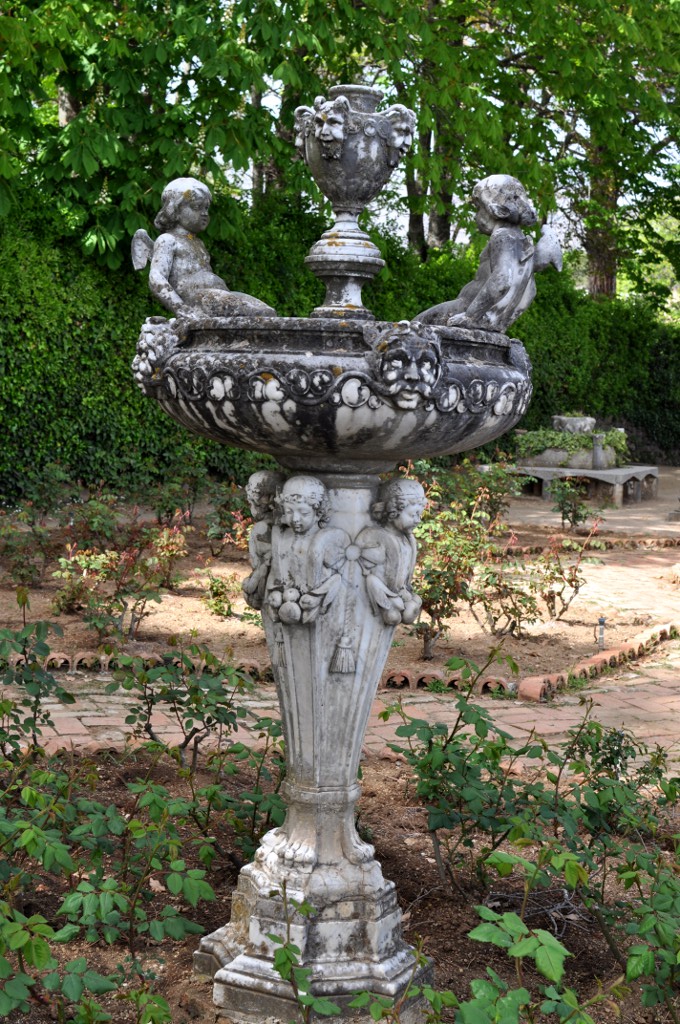
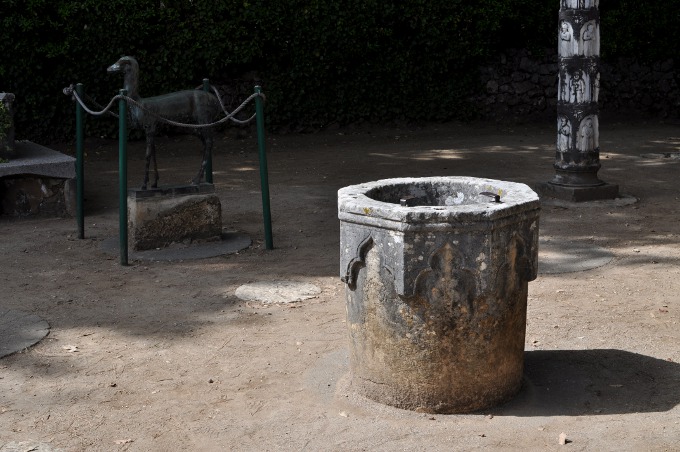
In the area before the pavillion we can see an old stone well, four beautiful columns from roman times, carved in the middle ages with multiple figures in relief and two elegant bronze deer.

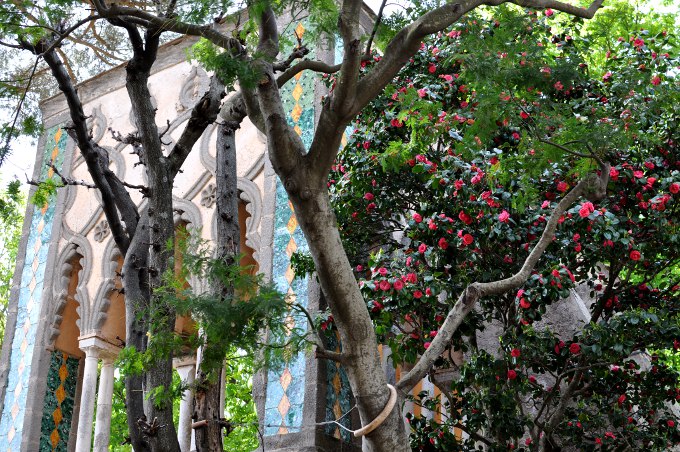
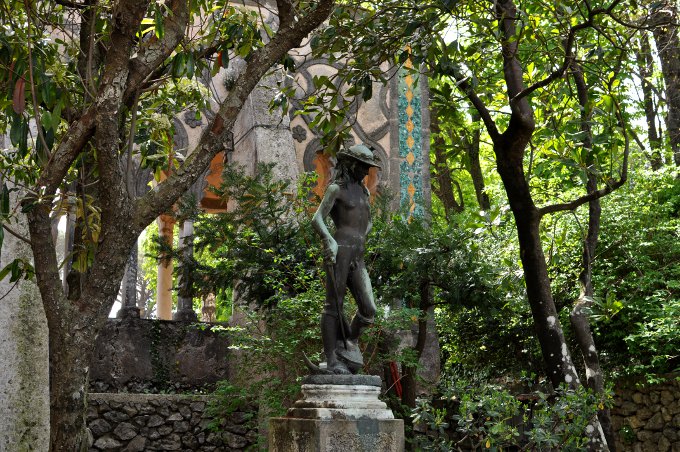
A representation of David by Donatello, beside the Tea room.

